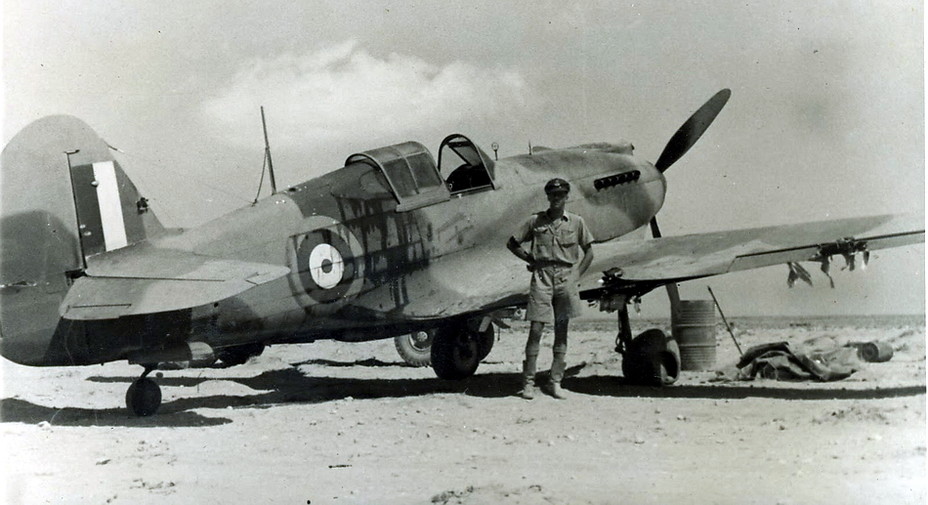 RAFCald by Eric Bergerud, on Flickr
RAFCald by Eric Bergerud, on Flickr
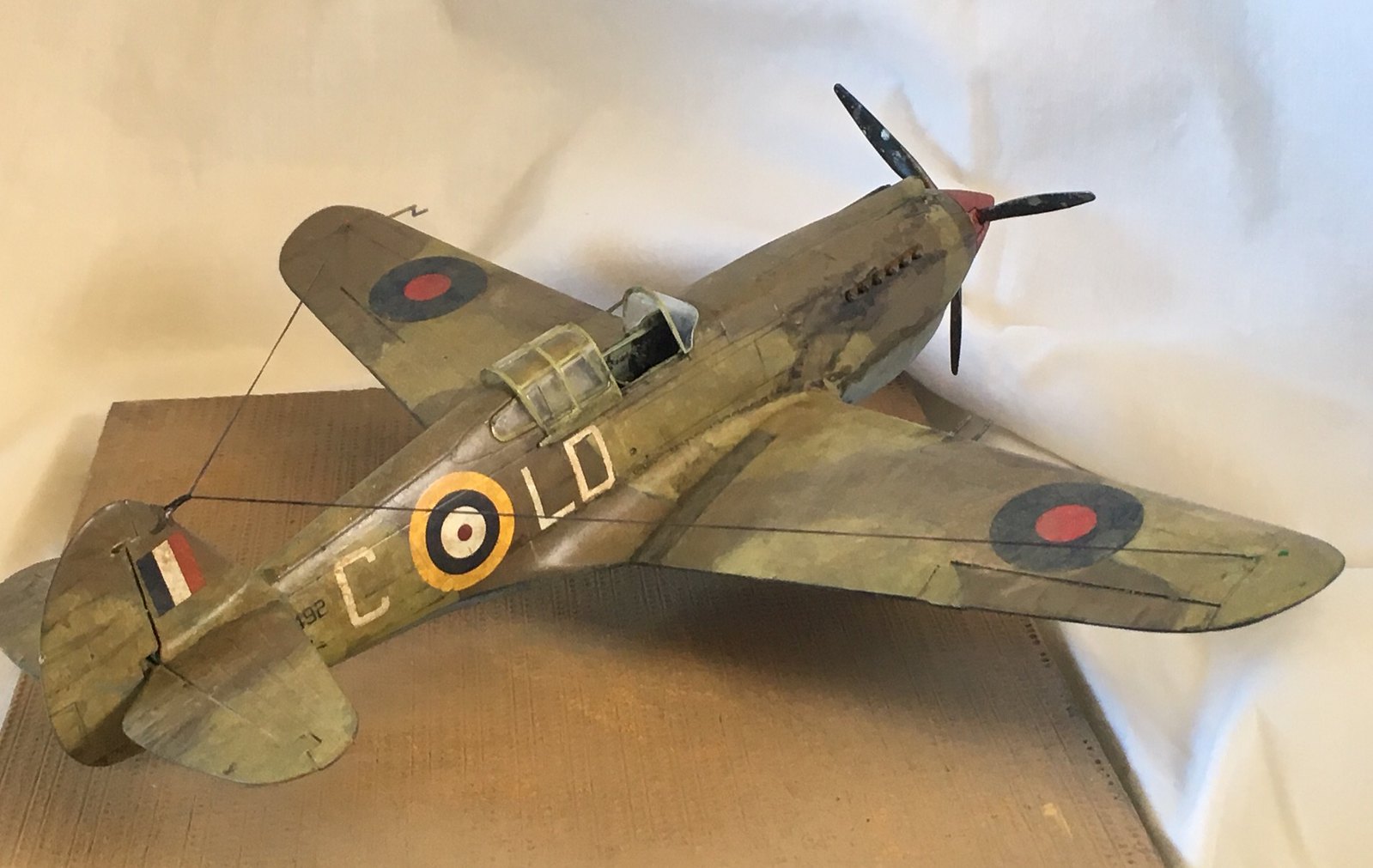 iprr! by Eric Bergerud, on Flickr
iprr! by Eric Bergerud, on Flickr
OK: the Airfix Tomahawk is a wrap. Here are the specs:
Paint: Golden High Flow Acrylics (Azure, Middlestone, Dark Earth mixes)
Weathering: Salt fading, Wilder & Gamblin oils, Iwata Com.Art (panel lines and fluids), Prisomcolor pencils (panel lines)
The Kit: By and large this was a very good kit. I think some modelers, especially Eduard fans, might find the surface detail a little sparse, but I thought it was fine. The fit was quite good - the cockpit slid into the fuselage perfectly, the landing gear was a snap, very little filler needed. The instructions are very good, although Humbrol paint call-outs are a pain. Some of the smaller fits were a headache because Airfix tried to try Tamiya style engineering without their engineers. The machine guns were a good example: they're molded to fit into a slot so they're straight and properly aligned. Good, but they don't fit, so you end up eyeballing it anyway. Tamiya it isn't. I would pay the extra for a Tamiya kit. However, Airfix has been putting out some very interesting kits - like this one - and Tamiya doesn't have one. So I'm hoping the other "new" Airfix kits I have will also work (HE-111, Hurricane, JU-87B and the C-47 on deck for the C-47/DC3 GB).
I may do a full build write up if I get the energy for the Aircraft Forum. If not, I've detailed the weathering in earlier posts. A quick summary - the kit was done using "black basing" that aims to create a very irregular and mottled finish. As this was a Desert AF Tomahawk, heavy duty fading was in order - salt fading and oils did the trick. One reason to black base is to get away from pre-shading and the often over emphasized panel lines that result. I did them with Iwata Com.Art "Transparent Smoke" paint which gives an indistinct image of minor panel lines and adds a coarse grime to the the surface that's not easy to see, but emphasizes the fade especially when the final matte varnish is applied. And, as this was a desert plane, I gave it a very light coating with loose Gamblin pigments at the end. (BTW: I use Windsor Newton Matte Varnish which is $9 but is simply super - that bottle will last for many kits. Thin with Gunze or Tamiya lacquer thinner. The matte "eggshell" effect is great.)
The decals were a problem because I got the Airfix US P-40B and not the Airfix Tomahawk which wasn't out when purchased. A pity because early war RAF markings are different in size than anything I had on hand, so I had to raid three different kits for the roundels. The proper markings required aftermarket. So I got a set of decals and masks from the Polish company Montex for a Tomahawk wearing the colors of Clive "Killer" Caldwell: Caldwell and his Tomahawk are above. (I don't usually do personal planes, but no choice here. And Caldwell was the allied "top gun" in the desert and all-time P-40 ace with 22 victories. He added another five, I think, when flying Spitfires out of Darwin - a campaign that started very badly for the RAAF. Anyway, Montex provided stencils, not decals, which I used for the large plane ID markings. The masks were pretty good - on par with Eduard.
The P-40 was a good plane for Desert Air Force. The P-40B/C were given the name Tomahawk (they've got the sharp snout with twin mgs over the prop), the P-40E were Kittyhawks (different snout, six mgs on the wings). Either were better fighters than the Hurricane which had it's one day in the sun during the summer of 1940. (Had the RAF had nothing but Hurricanes, the BoB would have been a very tough nut. The Hurricane matched up badly with the 109 and could barely match the speed of the 110 at high altitude. It had an airframe that was really from the early 30s and that hurt. It proved a fine strafer when fitted with 20 or even 40mm cannon until superseded by the Typhoon.) P-40s also matched up pretty well with Macchis and 109s. On paper the bad guys were superior, but in the dust and heat of the desert, both Axis machines (and the Spit) required modifications which hurt performance. Also, when flying in bad conditions, no airplane matched "paper specs" - another advantage for the Detroit Iron school of military aviation. The Tomahawks began to appear in early 1941 and were used until late 1942 when Kittyhawks slowly replaced them. (Caldwell flew both.)
The desert would have been one of the worst environments for combat aircraft. The sun would do a number on the matte paints of that era - fading them in record time. (Paints weren't very good then, and some pigments like cadmium were allocated to other strategic uses, so even a new plane would wear fast in Libya.) And then there was the sand. I've talked to several vets of the Egypt/Libya and Tunisia and everyone remembers the dust, sand, dirt and flies. One guy told me the dust and sand got into everything - it was literally in the water. So I've looked at hundreds of desert theater aircraft in the last few weeks and they were a worn bunch. Obviously, how worn would vary. Planes lost were replaced with new ones. But in the early war, ground crew kept planes in the air that in 1944 would have gone to the scrap heap. One thing that you often notice are fluids - not always obvious where they come from. The exhaust pattern on P-40s was down and to the rear in a kind of arc - what I've got is about right I think. And, because there were guns, an engine, the exhaust system and fuel lines up front, the front end was pretty soiled. Here are some pics that inspired the "heavy weather" I applied.
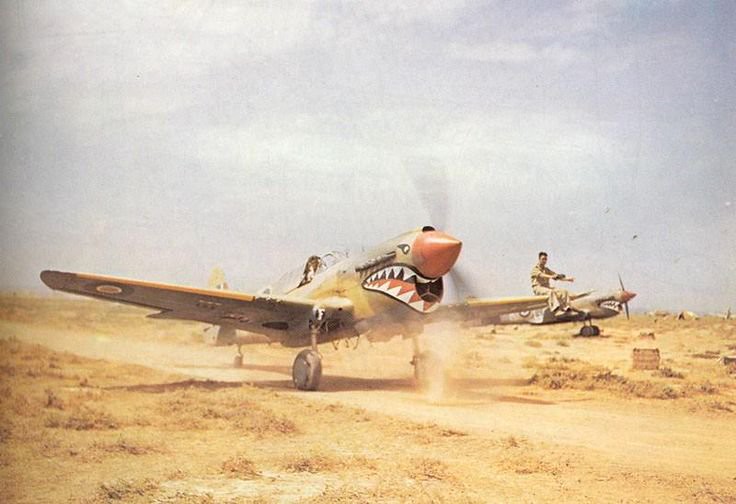 RAF6 by Eric Bergerud, on Flickr
RAF6 by Eric Bergerud, on Flickr
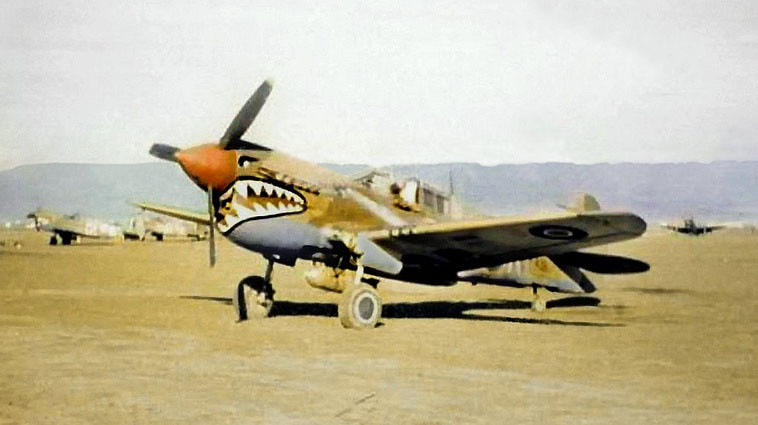 RAFcol by Eric Bergerud, on Flickr
RAFcol by Eric Bergerud, on Flickr
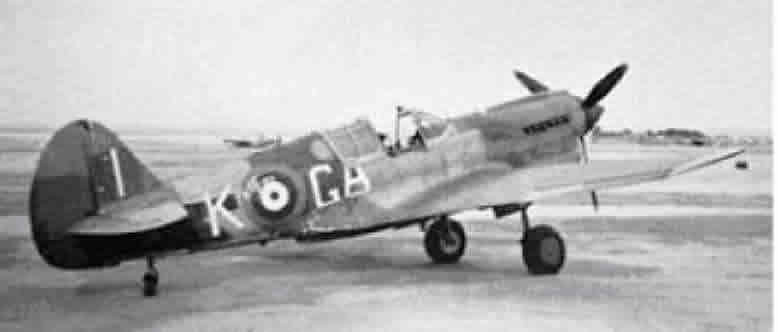 RAAF2 by Eric Bergerud, on Flickr
RAAF2 by Eric Bergerud, on Flickr
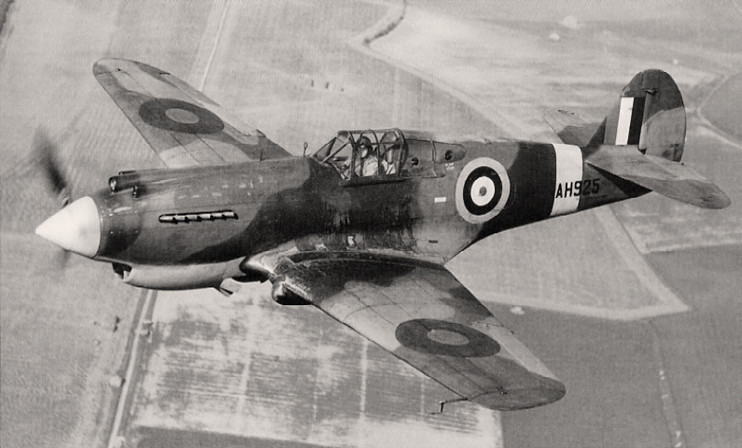 RAF4 by Eric Bergerud, on Flickr
RAF4 by Eric Bergerud, on Flickr
Here are some pics of my model. These detail shots - which you don't see looking at the kit from two feet away - show a closeup of the muli-layer weathering. It takes real time to make something look bad.
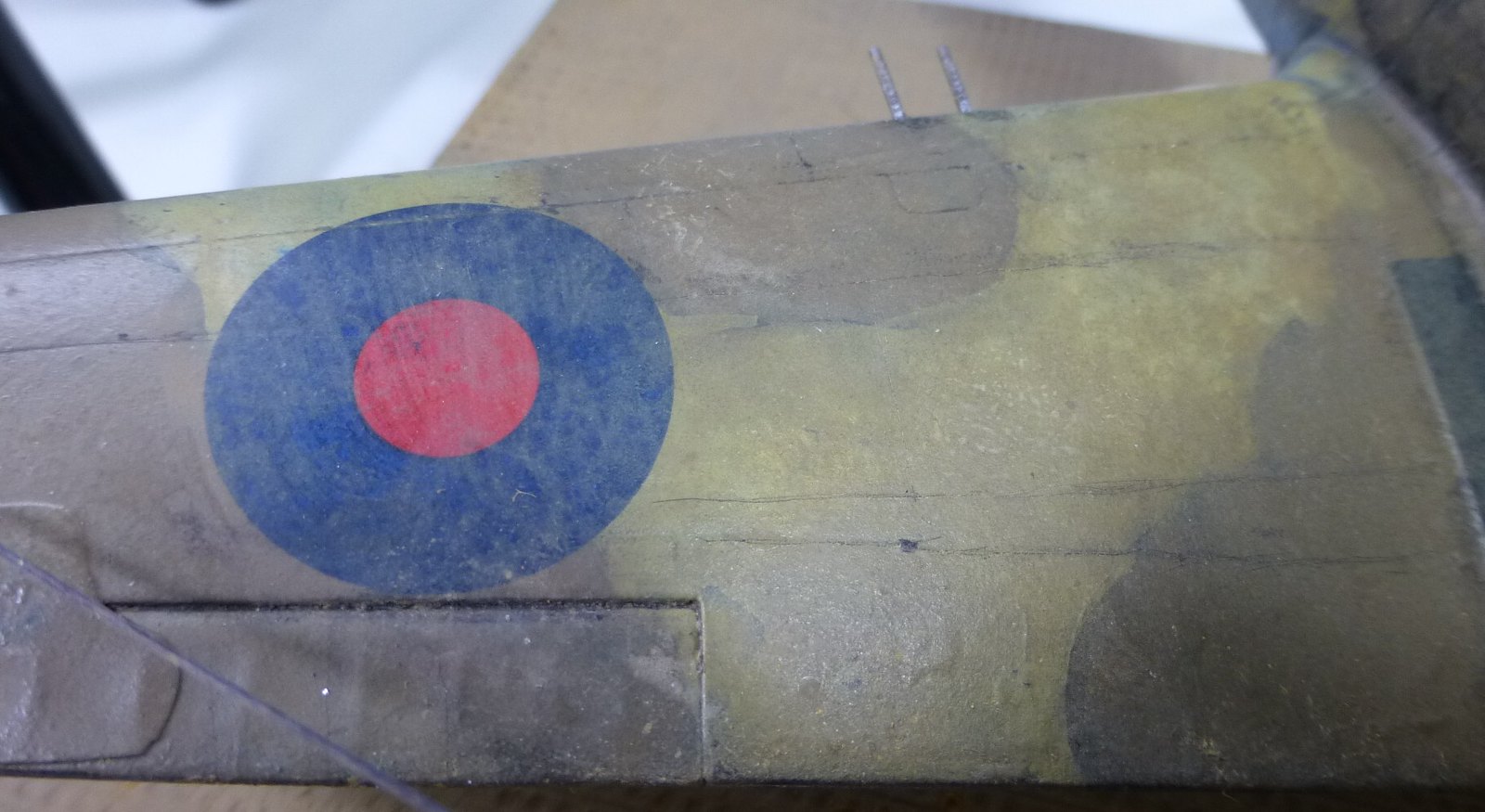 wngdet by Eric Bergerud, on Flickr
wngdet by Eric Bergerud, on Flickr
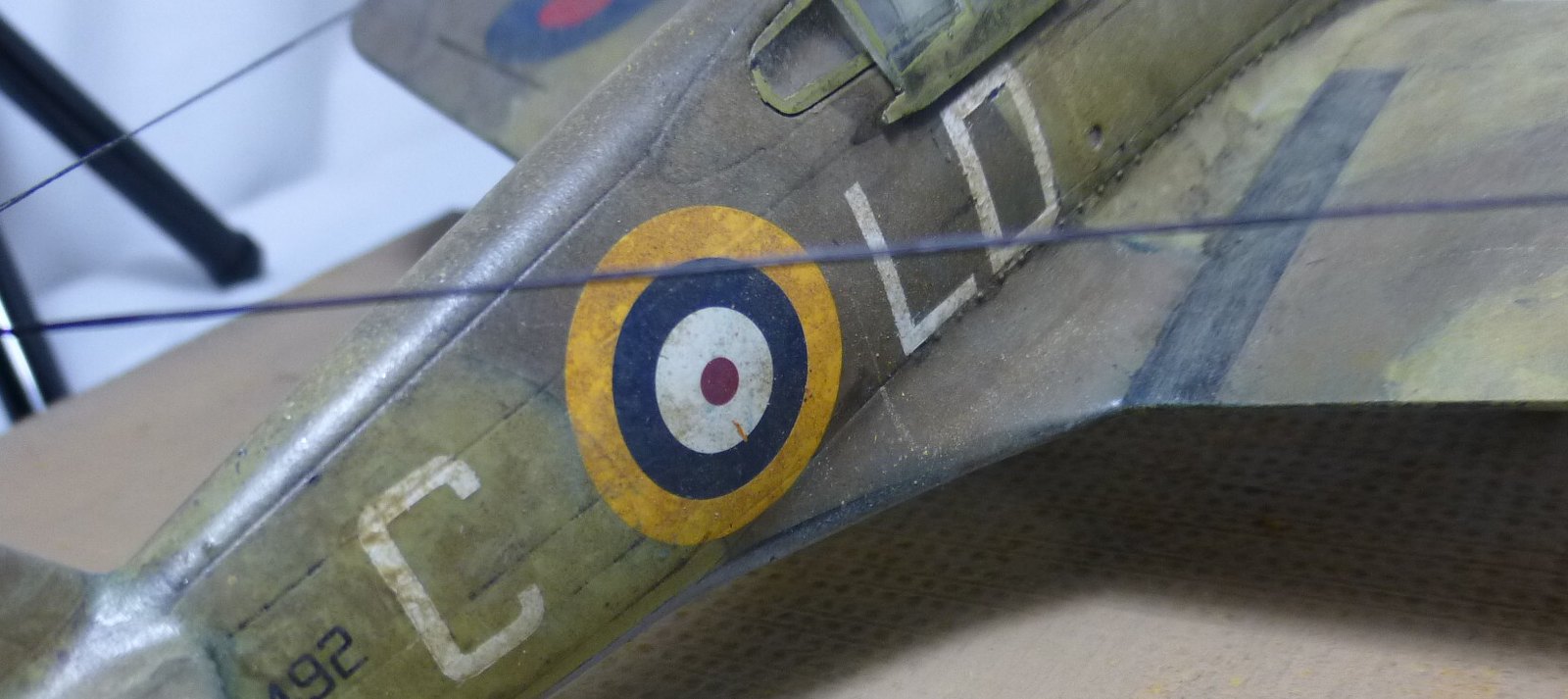 browndet by Eric Bergerud, on Flickr
browndet by Eric Bergerud, on Flickr
Here are some pics of the plane. I put it on a simple stand that I painted sand. I have no space for plane dios anyway. And I ran into one ugly trouble. I've got a very good Panasonic "point and shoot" camera, but for reasons that I can't figure, it didn't render the middlestone camo color well. In point of fact, there is green in RAF Middlestone, but the Panasonic amplified it. (So did a Nikon and a Canon.) I took a few thousand photos, or close, under different lighting etc and found I got closest to true color under a flash. So I had my wife use her iPhone 6S, and the color is almost perfect - a kind of tan with the slightest hint of green. There's a little sacrificed in detail, but it gives a good rendition. Just for kicks, the first pic below - a left side profile - came from my camera and the greenish tint on the middlestone is quite evident. The others are from the iPhone: the difference in color is easily seen. I really do have to figure this out. (Any ideas would be welcome.)
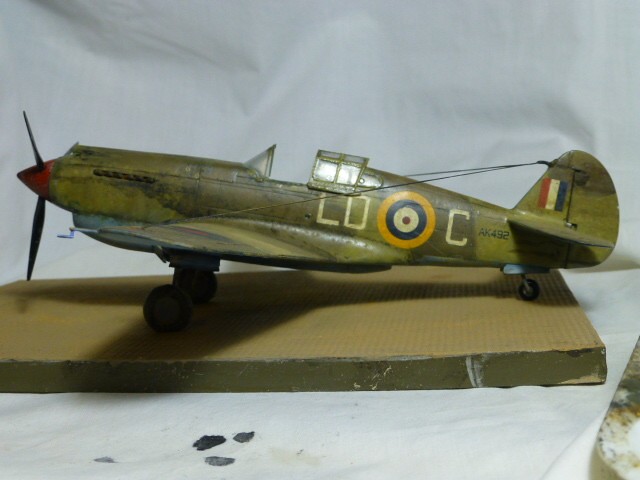 left3! by Eric Bergerud, on Flickr
left3! by Eric Bergerud, on Flickr
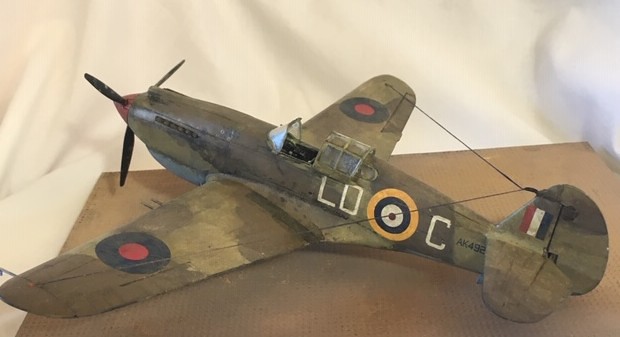 iplr3 by Eric Bergerud, on Flickr
iplr3 by Eric Bergerud, on Flickr
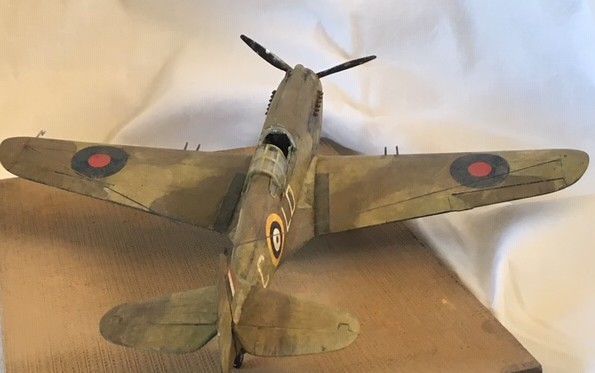 ipr by Eric Bergerud, on Flickr
ipr by Eric Bergerud, on Flickr
 iprft by Eric Bergerud, on Flickr
iprft by Eric Bergerud, on Flickr
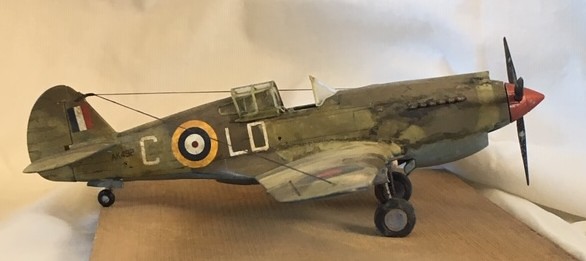 ipright2 by Eric Bergerud, on Flickr
ipright2 by Eric Bergerud, on Flickr
 iplftft by Eric Bergerud, on Flickr
iplftft by Eric Bergerud, on Flickr
Eric